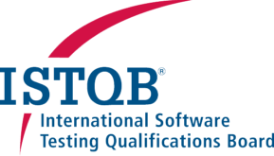Certified Tester Advanced Level Test Analyst (CTAL-TA)
The Advanced Level Test Analyst certification is aimed at people who wish to further develop their expertise in test analysis and test design techniques.
To gain this certification, candidates must hold the Certified Tester Foundation Level certificate and have sufficient practical experience. Please contact an ISTQB® Member Board or Exam Provider to determine the specific practical experience criteria.

A candidate who has achieved the Advanced Level Test Analyst certification should be able to:
- Perform the appropriate testing activities based on the software development life cycle being used
- Determine the proper prioritization of the testing activities based on the information provided by the risk analysis
- Select and apply appropriate test techniques to ensure that tests provide an adequate level of confidence, based on defined coverage criteria
- Provide the appropriate level of documentation relevant to their testing activities
- Determine the appropriate types of functional testing to be performed
- Work effectively in a usability testing team
- Effectively participate in requirements / user story reviews with stakeholders, applying knowledge of typical mistakes made in work products
- Improve the efficiency of the test process with the use of tools
Training is available from Accredited Training Providers (classroom, virtual, and e-learning). We highly recommend attending accredited training as it ensures that an ISTQB® Member Board has assessed the materials for relevance and consistency against the syllabus.
Self-study, using the syllabus and recommended reading material, is also an option when preparing for the exam.
Holders of this certification may choose to proceed to other Core, Agile, or Specialist stream certifications.
